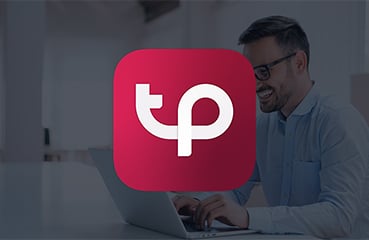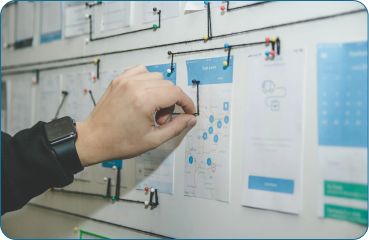.png?width=189&height=505&name=Vector%20(2).png)
The Importance of Automation for IT Compliance Management
Our Senior Applications Director, Matthew Davies gives us his expert insight into why it's time for organizations to invest in automating their IT compliance programs effectively.
Linking your teams and process together
There has never been a greater need for IT compliance automation which enables agile processes, technology, and information. The back-end management and oversight of IT compliance are crucial to the overall continuity of the organization. An effective IT compliance architecture and framework will engage employees and all relevant stakeholders to keep them connected and in tune with compliance – specifically, as it relates to their roles and responsibilities within the organization. Within this blog, our Senior Product Director provides an insight into why it is time for organizations to invest in automating their IT compliance programs.
Many organizations have discovered that their manual, document-centric approaches to compliance management have consumed too many resources and manpower in its management, monitoring, and reporting. Under these manual processes’, things slip through the cracks too easily or get lost in the never-ending barrage of compliance requirements and constant regulatory and business change.
Organizations have to implement an agile IT compliance management process architecture and framework by leveraging technology to adequately be prepared for emerging risks and compliance incidents.
Key reasons for embedding in a compliance management software solution
It’s important to develop a clear and compelling business case to address IT compliance in today’s dynamic business environment. The value and benefits of an integrated and agile technology architecture are:
-
To Keep pace with changing regulations
The regulatory landscape continues to grow, and nobody sees any signs of it stopping. Like many areas of the world shift into a post-pandemic mindset, regulatory bodies globally can be expected to come up with new requirements or changes to existing ones as a response to the pandemic and the economic, health, and safety concerns it posed.
-
Eliminates error-prone, time-consuming, and redundant manual processes
Compliance management, and especially IT compliance management, has grown in complexity and the organizations cannot expect compliance officers to analyze high volumes of incoming data and information manually to maintain compliance and keep with change results in things getting missed, misallocated manpower and resources, and potential manipulation.
-
Allows the organization to free up resources
This addresses misallocated manpower and resources to not just respond to and monitor emerging compliance risks haphazardly but also build on the organization’s operations by providing strategic insights into the business and its risks.

It is essential for businesses to develop an integrated, agile, and collaborative IT compliance program and framework and strategy – built on common information architecture and framework. This allows for IT compliance, risk management, and assessment activities to be coordinated and streamlined across the organization.
Go beyond the tick box exercise and mature your program
Unfortunately, many executives today view compliance as a checkbox, where they move on after the main requirements are met. However, meeting the minimum requirements only scrapes the surface of what proper IT compliance should be, and by mistaking compliance with things like information security, organizations are ignoring the actual threat within IT compliance and risk. At most, meeting regulations and requirements should just be the minimum or the starting point for a company’s comprehensive IT compliance strategy.
Checking off your compliance management checkbox isn’t the same thing as having a proven IT compliance strategy in place or reaching an ideal IT security maturity level. When it comes to information and cyber-security, it’s incredibly pivotal to be proactive in your IT compliance program. Organizations should look to implement proactive controls and solutions to ensure that they are continually discovering and implementing the most effective, efficient, and agile strategies and solutions that work in conjunction with their compliance requirements.
If you would like to get some advice on your compliance program, contact learnmore@surecloud.com or book a custom demo here.

About Matthew
Matthew Davies is responsible for the go-to-market proposition behind our GRC solution offerings and helps maximise the business value of our solutions. Before SureCloud, Matthew previously held positions in GRC implementation, pre-sales and product development at Deloitte and PWC.

About SureCloud
SureCloud is a provider of cloud-based, Integrated Risk Management products and Cybersecurity services, which reinvent the way you manage risk. SureCloud connects the dots with Integrated Risk Management solutions enabling you to make better decisions and achieve your desired business outcomes. SureCloud is underpinned by a highly configurable technology platform, which is simple, intuitive and flexible. Unlike other GRC Platform providers, SureCloud is adaptable enough to fit your current business processes without forcing you to make concessions during implementation; meaning you get immediate and sustained value from the outset. SureCloud has been recognized as a Challenger in the 2020 Gartner Magic Quadrants for Integrated Risk Management and Vendor Risk Management solutions.
.png?width=265&height=582&name=Vector%20(3).png)









.png?width=286&height=582&name=Vector%20(7).png)


 Copy link
Copy link

_%20Adopt%20a%20New%20Approach%20to%20Risk%20Management%20for%20Your%20Organization.png)